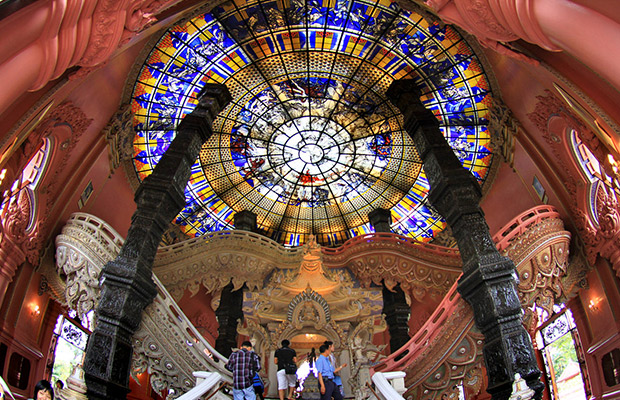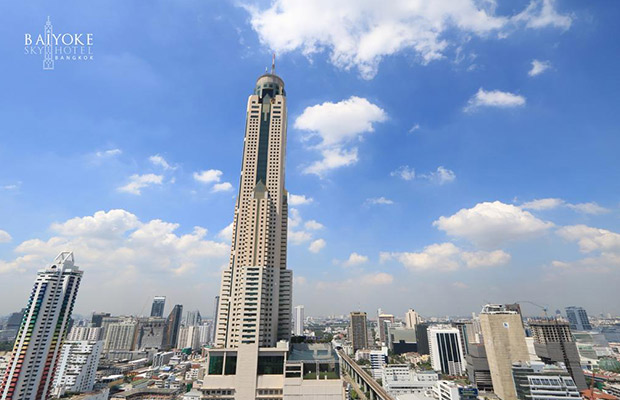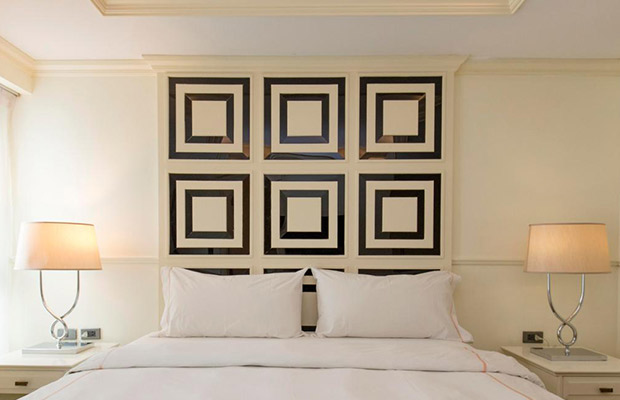Wat Traimit Withayaram Worawihan
Wat Traimit Withayaram Worawihan
Thailand
Bangkok
Bangkok Travel Guide
Book Tour & Activities
Your tour in Bangkok.
Book your stay
Your hotel in Bangkok.
Overview
The Wat Traimit temple in the Chinatown area of Bangkok is a Royal temple famous for the enormous gold Buddha image it houses.
The temple, which is officially named Wat Traimit Withayaram Worawihan and also known as “The Temple of the Golden Buddha” enshrines the massive solid gold Buddha image named Phra Phuttha Maha Suwan Patimakon displaying the subduing Mara mudra.
The Golden Buddha, officially titled Phra Phuttha Maha Suwana Patimakon, is a gold Maravijaya Attitude seated Buddharupa statue, with a weight of 5.5 tonnes (5,500 kilograms). It is located in the temple of Wat Traimit, Bangkok, Thailand. At one point in its history the statue was covered with a layer of stucco and coloured glass to conceal its true value, and it remained in this condition for almost 200 years, ending up as what was then a pagoda of minor significance. During relocation of the statue in 1955, the plaster was chipped off and the gold revealed.
History
The origins of this statue are uncertain. It is made in the Sukhothai Dynasty style of the 13th-14th centuries, though it could have been made after that time. The head of the statue is egg-shaped, which indicates its origin in the Sukothai period. Given that Sukothai art had Indian influences and metal figures of the Buddha made in India used to be taken to various countries for installation, this suggests the Golden Buddha statue may have been cast in parts in India.
Later, the statue was probably moved from Sukhothai to Ayutthaya, about 1403.
Some scholars believe the statue is mentioned in the somewhat controversial Ram Khamhaeng stele. In lines 23-27 of the first stone slab of the stele, "a gold Buddha image" is mentioned as being located "in the middle of Sukhothai City," interpreted as being a reference to the Wat Traimit Golden Buddha.
At some point, the statue was completely plastered over to prevent it from being stolen. The statue was covered with a thick layer of stucco, which was painted and inlaid with bits of coloured glass. It is believed that this plastering-over took place before the destruction of Ayutthaya kingdom by Burmese invaders in 1767. The statue remained among the ruins of Ayutthaya without attracting much attention.
In 1801, Thai King Buddha Yodfa Chulaloke (Rama I), after establishing Bangkok as a new capital city of the Kingdom, and after commissioning the construction of many temples in Bangkok, ordered that various old Buddha images should be brought to Bangkok from the ruined temples around the country.
At the time of King Rama III (1824-1851), the statue, still covered with stucco, was installed as the principal Buddha image in the main temple building of Wat Chotanaram in Bangkok.
When Wat Chotanaram, located near Chinatown, fell into disrepair and was closed, the statue was moved to its present location at the nearby Wat Traimit in 1935. At the time, Wat Traimit was a pagoda of minor significance (like hundreds of other Buddhist temples that exist in Bangkok). Since the temple didn't have a building big enough to house the statue, it was kept for 20 years under a simple tin roof. The true identity of this statue had been forgotten for almost 200 years.
Largest solid gold Buddha image in the world
For centuries the true identity and value of the image were not known, until by accident in the 1950’s it was discovered that the image was made of solid gold. The image is more than three meters high, weighs some five and a half tons and is most likely some 700 to 800 years old. It is the largest solid gold Buddha image in the world.
History of the Temple Golden Buddha
The origin of the huge Buddha image is not exactly known. Because of its style it is assumed that it was cast during the Sukhothai era, the Kingdom that existed from 1238 until 1438 with the city of Sukhothai in Northern Thailand as its center.
The Golden image moved to Ayutthaya
After the demise of Sukhothai and the rise of the Ayutthaya Kingdom (1350 - 1767), the statue was probably moved to a temple in Ayutthaya. In 1767 Ayutthaya was destroyed by Burmese invaders. At some point before that, the Golden Buddha image was covered with a plaster coating, most likely in order to disguise it and prevent it from being stolen by the Burmese.
After Ayutthaya was destroyed the image most likely remained in Ayutthaya, without drawing attention, and its true origin and value was forgotten.
After King Rama I had established Bangkok as the new capital, he ordered thousands of Buddha images to be brought to Bangkok from the Northern regions, such as Sukhothai and Ayutthaya, because of the still existing threat of the Burmese.
Wat Traimit Withayaram Worawihan, Temple of Golden Buddha
- Address: 661 Charoen Krung Rd, Talat Noi, Samphanthawong, Bangkok 10100, Thailand
- Height: 3 m
- Hours: from 8 am until 5 pm, except on Mondays.
- Phone: +66 89 002 2700
- Material: Gold
- Dedicated to: Gautama Buddha
Video Travel Inspiration
See Wat Traimit Withayaram Worawihan on Map
Most Popular Cities

Siem Reap
Cambodia
Ho Chi Minh City
Vietnam
Beijing
China
Paris
France
London
United Kingdom
New York
USA
Tokyo
Japan
Bangkok
Thailand
Seoul
South Korea
Vientiane
Laos
Yangon
Myanmar
Washington DC
USA
Los Angeles
USA
Ottawa
Canada
New Delhi
India
Singapore
Singapore
Kuala Lumpur
Malaysia
 English
English French
French Khmer
Khmer Thai
Thai Vietnamese
Vietnamese Chinese
Chinese Korean
Korean German
German Japanese
Japanese Italian
Italian Russian
Russian Spanish
Spanish Dutch
Dutch Indonesian
Indonesian Malay
Malay






































